 "ttyymmnn" (ttyymmnn)
"ttyymmnn" (ttyymmnn)
01/22/2016 at 12:35 • Filed to: planelopnik, planelopnik history
 8
8
 12
12
 "ttyymmnn" (ttyymmnn)
"ttyymmnn" (ttyymmnn)
01/22/2016 at 12:35 • Filed to: planelopnik, planelopnik history |  8 8
|  12 12 |
Welcome to This Date in Aviation History , getting you caught up on milestones and important historical events in aviation from January 20 through January 22.
!!! UNKNOWN CONTENT TYPE !!!
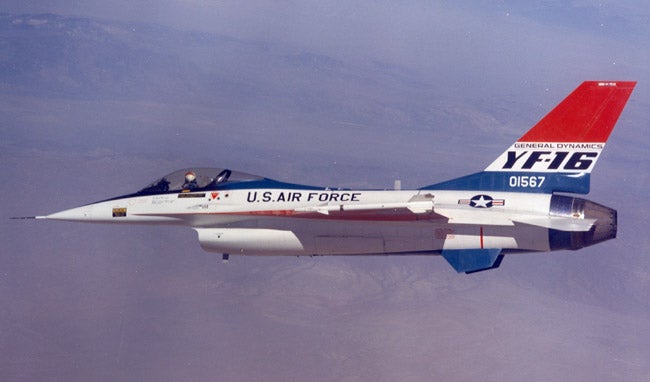
January 20, 1974 – The first flight of the General Dynamics F-16 Fighting Falcon.
With the first flight of the
!!!error: Indecipherable SUB-paragraph formatting!!!
in 1972, the US Air Force knew they had a winner on their hands, a true air superiority fighter that could take control of the air and keep it. But as good as the F-15 was (and still is), it was big and expensive, and the Air Force was concerned that they wouldn’t be able to afford enough of them to counter the hordes of Soviet fighters they would face in a potential war. Back in the 1960s, and based on experience with the heavy
!!!error: Indecipherable SUB-paragraph formatting!!!
against more nimble Russian fighters, Air Force Col. John Boyd, along with mathematician Thomas Christie, developed the
!!!error: Indecipherable SUB-paragraph formatting!!!
(E-M) which showed that small, lightweight aircraft would suffer the least amount of energy loss while maneuvering, especially when combined with a high thrust-to-weight ratio. Armed with that data, the Air Force announced the
!!!error: Indecipherable SUB-paragraph formatting!!!
(LWF), requesting proposals for an inexpensive, lightweight aircraft that would also be highly maneuverable. The request stated that the new fighter must have a high thrust-to-weight ratio, weigh no more than 20,000 lbs and cost no more than $3 million per copy (the F-15 cost about $5 million in 1972 dollars). Two companies submitted proposals. Northrop entered the twin-engine
!!!error: Indecipherable SUB-paragraph formatting!!!
, while General Dynamics put forward the single-engine YF-16. To keep the costs down, the F-16 would use the same engine that was powering the F-15, and as much as 58-percent of the components were interchangeable with other Air Force aircraft. Designers also designed many of the parts, such as
!!!error: Indecipherable SUB-paragraph formatting!!!
,
!!!error: Indecipherable SUB-paragraph formatting!!!
, and landing gear, to be reversible. The large air intake was positioned below the pilot, and the front landing gear was positioned behind the intake to limit foreign object debris (FOD) from fouling the engine. The gun was also placed above and behind the intake to prevent the ingestion of muzzle gasses. In another innovation, the pilot’s seat was reclined at 30 degrees, and the pilot’s feet raised, to allow the pilot to sustain higher G loads. And rather than a central control stick, the pilot uses a joystick mounted on the right side of the cockpit. Following the competition, the YF-16 was declared the winner of the LWF competition on January 13, 1975 (the YF-17 would eventually be developed into the F/A-18 Hornet). The F-16 Fighting Falcon (or Viper, as it is sometimes called) became an unqualified success for the Air Force, and as it evolved, its role has has also evolved into a potent ground attack aircraft. Production of the F-16 was sold to Lockheed Martin in 1993, and while the US Air Force is no longer procuring new F-16s ahead of the awaited entry into service of the
!!!error: Indecipherable SUB-paragraph formatting!!!
Lockheed Martin is still building new fighters for foreign customers, and more than 4,500 F-16s have been built to date. While this is the date of the first flight of the YF-16, that flight was entirely unintentional. Test pilot Phil Oestricher was performing a routine taxi test when he experienced roll-control oscillation that caused the wingtips to strike the ground. In a split-second decision, Oestricher chose to take off rather than continue the taxi test, and after a brief six-minute flight, he returned without incident. The official maiden flight took place on February 2.
(US Air Force photo)
!!! UNKNOWN CONTENT TYPE !!!
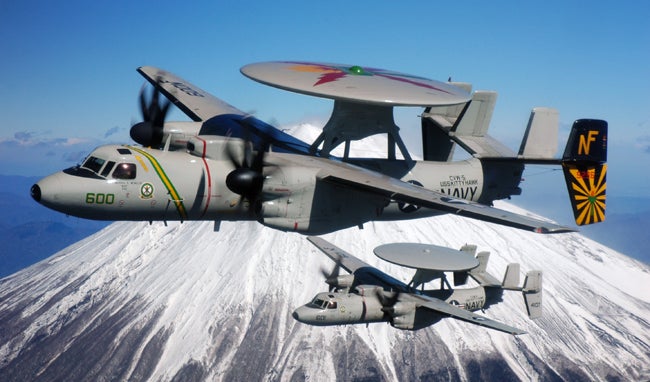
January 20, 1960 – The first flight of the Northrop Grumman E-2C Hawkeye.
Radar (Radio Detection And Ranging) came of age in WWII, and it was indispensible in detecting waves of attacking aircraft, or detecting ships maneuvering for attack. But the main limitation of radar is that it only reaches to the horizon. To detect targets beyond the horizon, the radar unit must be placed high in the air, and an airplane is the obvious choice for a high altitude radar set. Grumman has a long history of providing
!!!error: Indecipherable SUB-paragraph formatting!!!
(AEW) aircraft, originally placing radar equipment in a
!!!error: Indecipherable SUB-paragraph formatting!!!
torpedo bomber. They followed that with their two-plane
!!!error: Indecipherable SUB-paragraph formatting!!!
system, and eventually crammed radar gear into, and then a large radome onto, the
!!!error: Indecipherable SUB-paragraph formatting!!!
. But these were still systems that were placed into existing aircraft, and the single radar operators were often overwhelmed trying to track multiple targets. The answer would be a purpose-built AEW aircraft, and Grumman developed just that with the E-2 Hawkeye. In 1956, the US Navy announced a requirement for an aircraft that could not only detect enemy assets, but also integrate with the
!!!error: Indecipherable SUB-paragraph formatting!!!
to direct defensive measures to fend off the attackers. The first prototype of the Hawkeye took its maiden flight on October 21, 1960, with the first fully equipped aircraft taking its first flight six months later. But development of the Hawkeye was troublesome. Grumman engineers had significant problems dealing with the heat generated by the computer gear on board the plane, and the project was actually cancelled after 59 aircraft had already been built. But following a significant number of modifications, the new aircraft, now designated E-2B, proved to be an excellent and reliable platform. Further improvements led to the definitive E-2C, which featured all new electronics, surveillance and search radars, and more powerful engines, and took its maiden flight on this date. A further development, the E-2D and Hawkeye 2000, feature yet more improved avionics and a new, more efficient, and quieter eight-bladed propeller. Many older E-2C Hawkeyes were upgraded to the new standards. The Hawkeye carries a crew of five: pilot, co-pilot, radar officer, combat information center officer and aircraft control officer. The large radome and other sensors provide automatic detection and tracking of over 250 targets over land or sea and can control more than 30 friendly aircraft and direct them to targets. The Hawkeye also carries its own
!!!error: Indecipherable SUB-paragraph formatting!!!
(ECM) to jam enemy radars. The Hawkeye first saw service in the skies over Vietnam, and remains in service today. Still in production today, the Hawkeye serves seven other allied nations, and with continued improvements, it is expected to serve for many years to come.
(US Navy photo)
!!! UNKNOWN CONTENT TYPE !!!
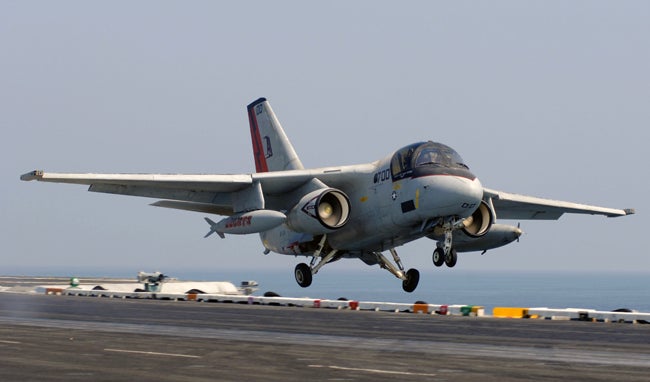
January 21, 1972 – The first flight of the Lockheed S-3 Viking.
The submarine came of age in WWI, and was made even more effective and dangerous during WWII. But the nuclear submarine was a quantum leap in capability over its ancestors, able to stay submerged for long periods of time and cover vast distances out of sight under the world’s oceans. And once those submarines gained the capability to launch nuclear missiles, the task of finding and destroying enemy submarines became of paramount importance. The US Navy already had a capable sub hunter in the
!!!error: Indecipherable SUB-paragraph formatting!!!
, but it was no match for this new breed of quieter, deeper-diving subs. Faced with the difficulty in tracking Soviet subs, the Navy issued a proposal in 1967 for a new VSX (Heavier-than-air, Anti-submarine, Experimental) aircraft that would be capable of operating from their carrier fleet. In response, they received proposals from five companies, including a joint proposal from Lockheed and Ling Temco Vought (LTV). The Lockheed offering was chosen as the winner in 1969, and design and production of the S-3 would be divided among the partners. LTV would build the wings, tail, landing gear, and engine pods. Univac would make the computers and data processing components. Lockheed would build the fuselage and coordinate the finally assembly and integration of the components. Following the maiden flight, additional money was allocated to build eight more research and development aircraft, and orders for 179 aircraft quickly followed, such was the perceived need for the Viking. The S-3 is powered by a pair of
!!!error: Indecipherable SUB-paragraph formatting!!!
high bypass turbofans that give the Viking excellent range and loiter time while hunting submarines. It carries a crew of four (three officers and one enlisted), with the pilot and copilot/tactical coordinator in the front seats, and the tactical coordinator and sensor operator in the back. For hunting submarines, the Viking was equipped with an AN/APS-116 sear search radar, forward looking infrared (FLIR), up to 16 sonobuoys that could be dropped to detect submarines underwater, and a magnetic anomaly detector (MAD) boom that could track subs by their magnetic signature. Unlike earlier aircraft like the S-2 or the
!!!error: Indecipherable SUB-paragraph formatting!!!
, the crew could share data between their screens and combine sensor information, making the 4-man crew as effective as a 12-man Orion crew. The Viking became operational in 1974 and immediately began their sub hunting duties to protect the battle group and detect enemy ballistic missile submarines. Following the collapse of the Soviet Union in 1991, and the subsequent breakup of the Warsaw Pact, the threat of Russian submarines was greatly reduced, and the Viking saw its role change to primarily sea surface search and anti-surface warfare. Most of the sub hunting gear was removed, and many Vikings also took on the role of aerial tanker. The S-3 saw service in the 1991 Gulf War and over Iraq during Operation Iraqi Freedom, but by 2009 the Navy announced the retirement of the Viking from carrier service, its role taken over by other fixed wing aircraft already in the Navy’s arsenal. The final Viking was retired from service on January 11, 2016.
(US Navy photo)
!!! UNKNOWN CONTENT TYPE !!!
Short Take Off
!!! UNKNOWN CONTENT TYPE !!!
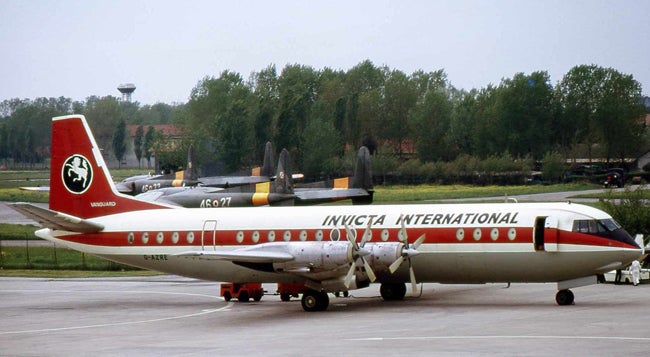
January 20, 1959 – The first flight of the Vickers Vanguard, a short- to medium-range turboprop airliner. An enlarged version of the successful !!!error: Indecipherable SUB-paragraph formatting!!! , the Vanguard was a victim of bad timing, as it was introduced at just about the same time as new jet-powered airliners, and sales suffered as a result. After ten years of service, Vickers introduced a cargo version called the Cargolifter, and that variant saw relatively good success, with older airliner versions subsequently converted to the cargo configuration. Forty-four Vanguards were produced, and the type was finally retired in 1996. (Photo by Piergiuliano Chesi via !!!error: Indecipherable SUB-paragraph formatting!!! )
!!! UNKNOWN CONTENT TYPE !!!

January 20, 1930 – The birth of Edwin Eugene “Buzz” Aldrin, an American engineer and astronaut who was the second man to set foot on the surface of the Moon after !!!error: Indecipherable SUB-paragraph formatting!!! in 1969. As pilot of the !!!error: Indecipherable SUB-paragraph formatting!!! Lunar Module, Aldrin performed the first manned landing on the lunar surface. After graduation from West Point, Aldrin served in Korea as a fighter pilot, flying the !!!error: Indecipherable SUB-paragraph formatting!!! on 66 combat missions and shooting down two !!!error: Indecipherable SUB-paragraph formatting!!! fighters. Prior to his Apollo 11 mission, Aldrin flew the final !!!error: Indecipherable SUB-paragraph formatting!!! mission with !!!error: Indecipherable SUB-paragraph formatting!!! , performing a 2 hour and 20 minute spacewalk. Aldrin left NASA in 1971 to become the Commandant of the !!!error: Indecipherable SUB-paragraph formatting!!! at Edwards AFB, and retired from the military the following year. (NASA photo)
!!! UNKNOWN CONTENT TYPE !!!
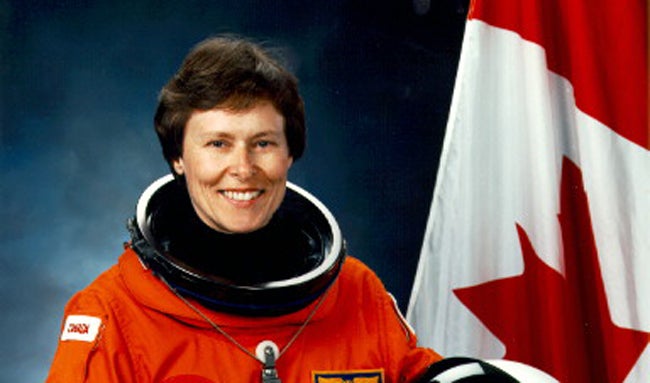
January 22, 1992 – The launch of Space Shuttle Discovery on STS-42, carrying the first Canadian woman into space
as part of an international crew that also carried the first German astronaut,
!!!error: Indecipherable SUB-paragraph formatting!!!
, on his second trip into Earth orbit. A neurologist, Bondar started training to be an astronaut in 1984, and acted as a Payload Specialist for the International Microgravity Laboratory Mission, performing experiments inside the Shuttles pressurized
!!!error: Indecipherable SUB-paragraph formatting!!!
. Following her Shuttle mission, Bondar worked for more than 10 years with NASA, leading an international research team to find ways to help humans recover from the weightlessness of space travel.
(NASA photo)
!!! UNKNOWN CONTENT TYPE !!!

January 22, 1922 – The death of Elsa Andersson.
The daughter of a farmer, Andersson aspired to be more than just a farmer’s wife. So, at age 24, she learned to fly, becoming Sweden’s first woman pilot. Following that achievement, she traveled to Germany to learn how to parachute, and toured as a parachuting stunt performer, often diving head first out of the airplane and performing acrobatics during free fall. Her untimely death came in the third jump of the day at a show Askersund, Sweden. In front of 4,000 spectators, Andersson’s parachute malfunctioned, opening too close to the ground to slow her fall. She was just 25 years old.
(Photo author unknown)
!!! UNKNOWN CONTENT TYPE !!!

January 22, 1907 – The birth of Douglas “Wrong Way” Corrigan.
Having helped
!!!error: Indecipherable SUB-paragraph formatting!!!
construct the
!!!error: Indecipherable SUB-paragraph formatting!!!
, and a pilot himself, Corrigan hoped to make his own transatlantic filght. However, his application to the Bureau of Air Commerce was rejected because they said his aircraft was unsound for such a trip. Undaunted, Corrigan first flew from California to New York’s Floyd Bennett Field. After filing a flight plan for a return to California, Corrigan instead headed east across the Atlantic Ocean and, after 18 hours of flying, arrived in Ireland. Corrigan claimed that he never intended to make the flight, and that navigational errors, obscured landmarks, and a faulty compass led to his wrong way flight. Corrigan was only lightly punished by aviation officials, and he became a celebrity, with ticker tape parades in both New York and Chicago. Corrigan died in 1955.
(Photo author unknown)
!!! UNKNOWN CONTENT TYPE !!!
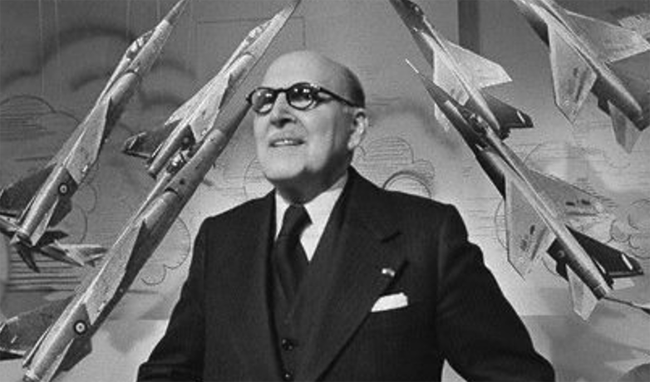
January 22, 1892 – The birth of Marcel Dassault. Born Marcel Bloch, Dassault made his first contribution to aviation by designing an aircraft propeller during WWI, and also founded his own aircraft manufacturing company, the Société des Avions Marcel Bloch . Of Jewish parentage, Bloch took the name Dassault, deriving it from char d’assaut , the French work for battle tank . But during WWII, Dassault refused to collaborate with the !!!error: Indecipherable SUB-paragraph formatting!!! , a French company created during the German occupation of France, so he was sent to the !!!error: Indecipherable SUB-paragraph formatting!!! concentration camp until its liberation in 1945. In 1947, his company became the Société des Avions Marcel Dassault, which designed the first French jet fighter to enter production, the !!!error: Indecipherable SUB-paragraph formatting!!! . !!!error: Indecipherable SUB-paragraph formatting!!! is now the premiere manufacturer of military, business and regional jets in France. Dassault died in 1986. (Photo author unknown)
!!! UNKNOWN CONTENT TYPE !!!
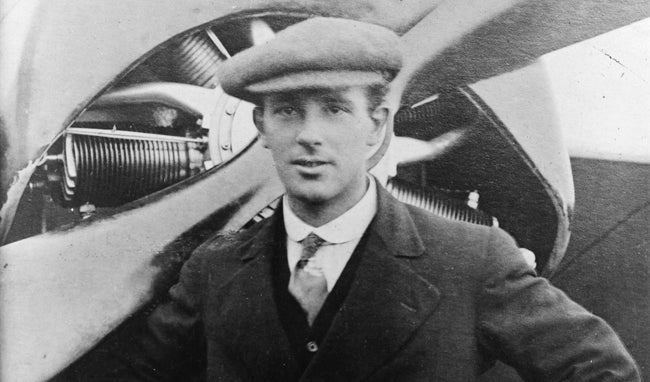
January 22, 1889 – The birth of Harry George Hawker, an Australian aviation pioneer, chief test pilot for !!!error: Indecipherable SUB-paragraph formatting!!! during WWI, and founder of Hawker Aircraft. Hawker began his career as an auto mechanic in England before starting work with Sopwith, where he convinced them to teach him to fly, soloing after just three lessons. Following the liquidation of Sopwith Aircraft in 1920, Hawker teamed with Thomas Sopwith to start a new company, H.G. Hawker Engineering. Though Harry Hawker died in 1921 in the crash of his !!!error: Indecipherable SUB-paragraph formatting!!! , the company he helped found continued. Through a series of acquisitions and mergers it became Hawker Siddeley Aircraft, though it continued to make aircraft with the Hawker name. These included many of the most important and iconic aircraft of WWII, particularly the !!!error: Indecipherable SUB-paragraph formatting!!! and !!!error: Indecipherable SUB-paragraph formatting!!! . (Photo from the George Grantham Bain Collection via !!!error: Indecipherable SUB-paragraph formatting!!! )
!!! UNKNOWN CONTENT TYPE !!!
!!! UNKNOWN HEADER TYPE (MULTI-LINE BREAK?) !!!
!!! UNKNOWN CONTENT TYPE !!!
!!! UNKNOWN CONTENT TYPE !!!
!!! UNKNOWN CONTENT TYPE !!!
!!! UNKNOWN CONTENT TYPE !!!
If you enjoy these Aviation History posts, please let me know in the comments. And if you missed any of the past articles, you can find them all at
!!!error: Indecipherable SUB-paragraph formatting!!!
.
 The Transporter
> ttyymmnn
The Transporter
> ttyymmnn
01/22/2016 at 12:51 |
|

...the E-2C’s radar doesn’t see over the horizon, its horizon is simply farther away than surface ships because of its high altitude.
 MonkeePuzzle
> ttyymmnn
MonkeePuzzle
> ttyymmnn
01/22/2016 at 13:18 |
|
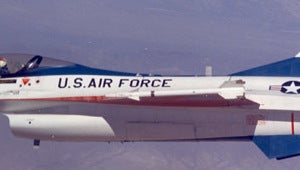
when someone says “jet” or “fighter jet”, this is the shape I think of
 ttyymmnn
> MonkeePuzzle
ttyymmnn
> MonkeePuzzle
01/22/2016 at 13:22 |
|
It’s a beauty, no doubt.
 MonkeePuzzle
> The Transporter
MonkeePuzzle
> The Transporter
01/22/2016 at 13:22 |
|
lol
 ttyymmnn
> The Transporter
ttyymmnn
> The Transporter
01/22/2016 at 13:24 |
|
Right. Was I unclear about that? I thought I set it up at the beginning of the article.
 The Transporter
> ttyymmnn
The Transporter
> ttyymmnn
01/22/2016 at 13:40 |
|
Don’t mind me, I’m just being a pedantic nerd.
 RallyWrench
> ttyymmnn
RallyWrench
> ttyymmnn
01/22/2016 at 15:56 |
|
Some significant aircraft and people this week! Sad that an F16 crashed yesterday in Arizona, so near the date of its first flight.
 ttyymmnn
> RallyWrench
ttyymmnn
> RallyWrench
01/22/2016 at 16:20 |
|
I hadn’t heard about that crash. Did the pilot get out?
The airplanes are cool, but I’m becoming more interested in the people as this series goes along. Bessie Coleman next week.
 RallyWrench
> ttyymmnn
RallyWrench
> ttyymmnn
01/22/2016 at 16:28 |
|
Didn’t hear about the pilot, last I heard yesterday they were doing SAR. The aircraft wouldn’t exist or achieve without the people, so keep it up!
 S2Konstantin
> The Transporter
S2Konstantin
> The Transporter
01/22/2016 at 20:40 |
|
Its beyond the horizon of the carrier group. The floaty part at least.
 user314
> ttyymmnn
user314
> ttyymmnn
01/22/2016 at 20:54 |
|
 ttyymmnn
> user314
ttyymmnn
> user314
01/23/2016 at 09:53 |
|
Bummer. Thanks.